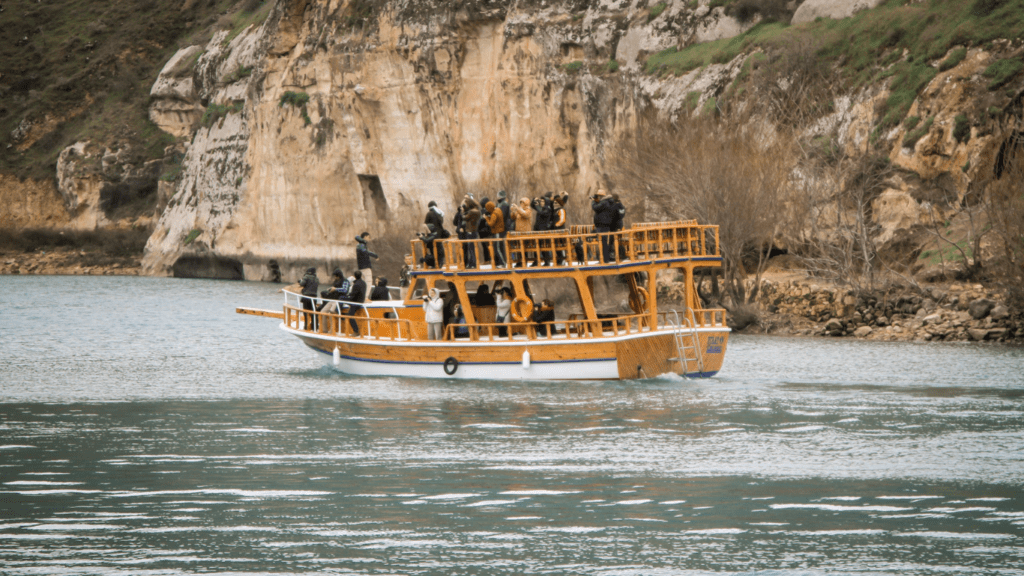Exploring Eco Tours: What Makes a Tour Eco-Friendly?
Eco tours focus on sustainability and responsible travel, offering unique experiences that prioritize environmental and cultural integrity.
The Importance of Sustainability
Sustainability in travel ensures minimal impact on natural and cultural environments. When we choose eco tours, we protect biodiversity and reduce pollution. These tours often support local economies by employing local guides, using local accommodations, and sourcing food locally. This way, eco tours combine travel with conservation efforts, encouraging a connection between tourists and the destinations they visit.
Key Features of Eco Tours
- Eco-Friendly Transportation: Many eco tours use low-impact transport modes like bicycles, kayaks, or electric vehicles. Walking tours serve not only as a zero-emission option but also enhance interaction with the environment.
- Sustainable Lodging: Accommodations on eco tours follow green practices such as water conservation, renewable energy use, and waste reduction. Examples include eco-lodges and campgrounds that limit their environmental footprint.
- Wildlife Protection: Responsible wildlife interactions ensure species are not disturbed. Guided wildlife tours maintain safe distances, and photo-friendly spots avoid sensitive habitats.
- Cultural Respect: Eco tours emphasize respect for local cultures. Guides educate tourists about indigenous traditions and historical contexts, promoting mutual understanding and respect.
- Minimal Waste: Tours reduce waste by encouraging reusable items and using biodegradable products. Examples include refillable water bottles and eco-friendly toiletries.
- Local Sourcing: Eco tours often feature meals made from locally sourced ingredients. This supports local farmers, reduces carbon footprint, and provides an authentic culinary experience.
Top Destinations for Eco Tours Globally
Eco tours offer unique opportunities to explore pristine environments and support sustainability. Below are some of the best destinations for eco tours around the world, featuring diverse ecosystems and conservation efforts.
Rainforest Expeditions

Rainforest expeditions immerse travelers in lush, biodiverse landscapes. The Amazon Rainforest, spanning nine countries in South America, is an unparalleled destination. Guided tours offer activities like:
- boat rides
- birdwatching
- exploring indigenous villages
In Costa Rica, the Corcovado National Park boasts over 13 ecosystems, home to species like jaguars and scarlet macaws. Tours here often include hiking, kayaking, and nature photography.
In Southeast Asia, Borneo’s rainforests provide a sanctuary for orangutans and pygmy elephants. Eco tours in Borneo focus on wildlife observation, canopy walks, and river safaris.
Desert Conservation Tours
Desert conservation tours highlight the fragile beauty of arid landscapes. Namibia’s Namib Desert, the world’s oldest desert, offers conservation-focused tours exploring vast sand dunes, rare flora, and the unique wildlife of the Namib-Naukluft National Park. In
Jordan’s Wadi Rum, eco-tourists can experience Bedouin culture and sustainability initiatives while trekking through stunning sandstone valleys.
In the Southwestern United States, the Sonoran Desert offers guided tours emphasizing biodiversity and conservation efforts, with opportunities to see cacti, desert wildlife, and ancient petroglyphs.
Polar Region Adventures
Polar region adventures showcase some of the planet’s most extreme environments. In Antarctica, eco cruises focus on minimizing human impact while offering incredible sights of glaciers, penguins, and seals.
Travelers can participate in citizen science projects and learn about climate change. The Arctic, particularly areas like Svalbard and
Greenland, offers eco tours centered on polar bear sightings, northern lights, and indigenous culture. Activities include dog sledding, kayaking among icebergs, and educational talks on conservation.
Marine Conservation Tours
Marine conservation tours explore underwater ecosystems and coastal habitats. Australia’s Great Barrier Reef provides snorkeling and diving tours to witness coral reefs, sea turtles, and diverse marine life while promoting reef preservation efforts.
In the Galápagos Islands, tours adhere to strict conservation guidelines to protect unique species like the giant tortoise and marine iguana. Activities often include snorkeling, hiking, and visits to research stations.
In Belize, the Belize Barrier Reef offers eco tours that combine marine conservation with cultural heritage, featuring activities like scuba diving and exploring Mayan ruins.
Mountain Ecosystem Exploration
Mountain ecosystem exploration introduces travelers to high-altitude environments and conservation projects. The Himalayas, particularly in Nepal and Bhutan, offer eco tours focusing on sustainable trekking routes, cultural immersion, and wildlife protection.
In the Andes, eco tours highlight the unique biodiversity of Andean habitats and ancient Incan sites like Machu Picchu. Activities typically include hiking, birdwatching, and visiting local communities.
In North America, the Rocky Mountains provide eco tours that emphasize the preservation of pristine landscapes and wildlife, with opportunities for hiking, wildlife spotting, and educational programs on mountain ecology.
Eco Tours in North America
North America offers a variety of eco tours that provide opportunities to explore pristine landscapes and engage in sustainable travel practices. From vast wilderness regions to rugged terrains, these eco tours promise unforgettable adventures.
Canadian Wilderness Tours
Canada presents diverse eco tours across its expansive wilderness. Visitors can explore national parks like Banff and Jasper, which offer guided tours focusing on conservation and wildlife.
In British Columbia, the Great Bear Rainforest houses unique species, including the rare white Kermode bear. Whale watching tours in Canada’s Atlantic provinces emphasize marine conservation, highlighting species such as humpback and minke whales.
Adventure Tours in Alaska
Alaska’s eco tours offer immersive experiences in its untouched natural landscapes. Denali National Park provides tours that focus on the preservation of its diverse ecosystems, showcasing species like grizzly bears and caribou.
In the Kenai Fjords, eco cruises emphasize glacial conservation and marine wildlife, with opportunities to see sea otters and orcas. Guided tours in the Tongass National Forest offer insights into temperate rainforest ecology and sustainable forestry practices.
Eco Tours in Europe
Eco tours in Europe provide diverse experiences, from exploring pristine fjords to trekking through lush highlands.
Norwegian Fjord Eco Adventures
Norwegian Fjord eco adventures showcase Norway’s stunning landscapes and commitment to sustainability. Known for dramatic scenery, these tours focus on low-impact activities like:
- kayaking
- hiking
- wildlife watching
Navigating the Sognefjord, Norway’s longest and deepest fjord, offers breathtaking views and encounters with marine life. In the Geirangerfjord, a UNESCO World Heritage Site, tourists can meet local guides who practice sustainable tourism.
Solar-powered boats and electric ferries are common, minimizing environmental impact.
Eco Tours Through the Scottish Highlands
Eco tours through the Scottish Highlands highlight natural beauty and local culture. Emphasizing sustainable practices, these tours incorporate hiking, cycling, and wildlife observation.
The Cairngorms National Park offers habitat to endangered species like capercaillies and wildcats, with conservation-driven activities.
Explore the Isle of Skye’s rugged terrain and learn about local conservation efforts. By staying in eco-friendly accommodations and employing local guides, these tours blend adventure with environmental responsibility.
How to Choose Your Next Eco Tour
Selecting an eco tour involves considering various factors to ensure it aligns with sustainable travel principles.
Assessing Environmental Impact
Evaluate the environmental impact of the eco tour. Check whether the tour operator uses biodegradable or reusable materials. Look for tours that minimize carbon emissions through the use of electric or hybrid vehicles and practices like carbon offsetting.
Consider destinations that promote wildlife conservation, such as the Galápagos Islands’ minimal visitor regulations. Review the operator’s adherence to Leave No Trace principles.
Understanding Community Benefits
Look into how the eco tour benefits local communities. Ensure the tour supports local businesses and employ local guides. Choose tours that integrate cultural exchange programs where tourists learn about local traditions, history, and livelihoods, similar to community-based tourism initiatives in Cambodia. Verify that operators contribute to local conservation efforts or provide financial support to community projects.
 Edward Kindler - Eco-Tourism Advocate & Contributor at Green Commerce Haven
Edward Kindler is a passionate eco-tourism advocate and a dedicated contributor to Green Commerce Haven. With a background in sustainable travel and a deep love for nature, Edward specializes in sharing insights on eco-tourism tips and environmentally responsible travel practices. His expertise helps guide readers in exploring the world while minimizing their environmental impact. Edward’s contributions to Green Commerce Haven reflect his commitment to promoting travel experiences that honor and protect the natural world.
Edward Kindler - Eco-Tourism Advocate & Contributor at Green Commerce Haven
Edward Kindler is a passionate eco-tourism advocate and a dedicated contributor to Green Commerce Haven. With a background in sustainable travel and a deep love for nature, Edward specializes in sharing insights on eco-tourism tips and environmentally responsible travel practices. His expertise helps guide readers in exploring the world while minimizing their environmental impact. Edward’s contributions to Green Commerce Haven reflect his commitment to promoting travel experiences that honor and protect the natural world.
